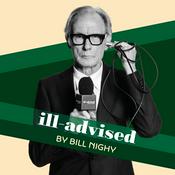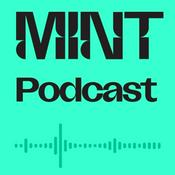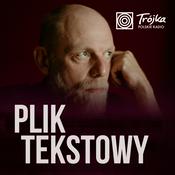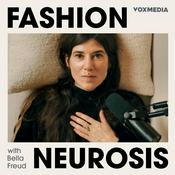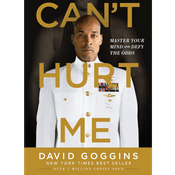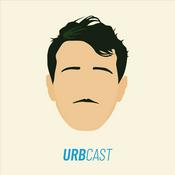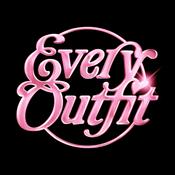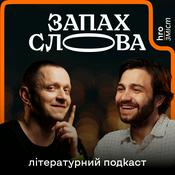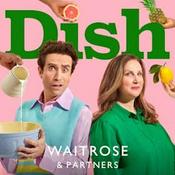144 odcinków

2025 Book-to-Screen Wrap-Up | Top Episodes, Best/Worst Adaptations & Our 2026 Reset
13.12.2025 | 34 min.
It’s our 2025 Fully Booked recap—part “podcast Wrapped,” part honest creative debrief. We break down our top 5 most-listened episodes (and why the internet clearly loves a timely adaptation take), share our personal favorites (from book hangovers and games to big-topic conversations like banning books), and unpack the months that felt too rigid, too narrow, or just creatively exhausting.We also talk about how the book-to-screen world keeps accelerating—trailers, releases, streaming drops, and adaptations arriving so fast that staying locked into strict monthly themes can mean missing the exact conversations everyone’s already having. So we’re making a change: 2026 will be looser, more flexible, and more “let’s talk about what’s happening right now.”If you’ve been listening all year (thank you!), this episode is both a celebration and a reset—plus a little peek at what we’re excited to cover next. Subscribe on your favorite platform!SpotifyApple PodcastAmazon MusiciHeart RadioPodchaserYoutubeDon't forget to follow us on socials too!InstagramThreadsTikTokBlueSkyFacebook Hosted by Simplecast, an AdsWizz company. See pcm.adswizz.com for information about our collection and use of personal data for advertising.

Year in Books 2025: ARCs We Loved, Best New Authors & Genre Detours
06.12.2025 | 31 min.
Our 2025 reading wrap-up is here! We’re talking fantasy burnout, new mom thriller binges, ARCs we loved, and a late-year return to horror, cozy fantasy, and darkly funny mysteries.If you’re hunting for fantasy, thriller, and horror book recommendations—plus real talk about reading through seasonal slumps and motherhood—this episode is for you. Subscribe on your favorite platform!SpotifyApple PodcastAmazon MusiciHeart RadioPodchaserYoutubeDon't forget to follow us on socials too!InstagramThreadsTikTokBlueSkyFacebook Hosted by Simplecast, an AdsWizz company. See pcm.adswizz.com for information about our collection and use of personal data for advertising.

Is Fantasy Just Smut with Dragons Now? Romantasy, BookTok & Viral Series Debate
29.11.2025 | 33 min.
Why do some fantasy series absolutely explode while others quietly disappear from your TBR? In this episode of Fully-Booked, Megan and Shirin unpack the rise of romantasy, dark romance, and spicy dragon epics to figure out what really makes a fantasy series go viral.Is there a magic formula behind today’s breakout fantasy hits? The hosts talk worldbuilding vs romance, character-driven sagas, the role of BookTok and RomantasyTok, and whether every new “high fantasy” release really needs explicit spice on every other page. They compare classic epic fantasy vibes (Tolkien, The Dark Tower, Shannara) with the current wave of dragon academies, fae courts, and dark romance crossovers, and wonder if we’re due for the next shift.If you’ve ever picked up a “high fantasy” only to discover it’s basically an erotic novel with dragons, or you miss old-school worldbuilding where the plot is more than just who’s kissing who, this conversation is for you. Subscribe on your favorite platform!SpotifyApple PodcastAmazon MusiciHeart RadioPodchaserYoutubeDon't forget to follow us on socials too!InstagramThreadsTikTokBlueSkyFacebook Hosted by Simplecast, an AdsWizz company. See pcm.adswizz.com for information about our collection and use of personal data for advertising.

Is Wicked: Part Two Actually… Good? Ariana Grande, Cynthia Erivo & a Very Messy Second Act
25.11.2025 | 36 min.
Welcome back to Fully-Booked, and happy Wicked Week!In this spoiler-packed episode, Meghan and Shereen sit down the day after seeing Wicked: Part Two to ask a big question: was this sequel actually good, or just really, really pretty?Drawing on Meaghan’s experience with Gregory Maguire’s novel and the Broadway musical, and Shirin's fresh movie-focused perspective, they unpack how the film handles Elphaba’s story, why Glinda weirdly feels like the main character in Part Two, and how much the new original songs actually add to the runtime. They talk fan expectations, social media intensity, and why some viewers seem ready to defend this franchise like it’s a personality trait. Subscribe on your favorite platform!SpotifyApple PodcastAmazon MusiciHeart RadioPodchaserYoutubeDon't forget to follow us on socials too!InstagramThreadsTikTokBlueSkyFacebook Hosted by Simplecast, an AdsWizz company. See pcm.adswizz.com for information about our collection and use of personal data for advertising.

Dark Fairy Tales, Feminist Horror & Forever My Girl (Book vs Movie)
14.11.2025 | 31 min.
Hey there, fictional friends!On this episode of Fully Booked, Meghan and Shirin take a break from “serious” adaptations and dive into a mixed bag of comfort reads, ranging from horror to romance.💘 Main Chat: Forever My Girl – Book vs MovieWe unpack the Heidi McLaughlin novel and its 2018 film adaptation: runaway groom country-music star, furious florist ex, secret kid, small-town Louisiana vibes, and why the movie softens some of the book’s toxicity while dialling up the swoon.🧠 Escapism, Doomscrolling & Mental HealthWhy horror and small-town romances are hitting so hard right now, how feminists are remaking body horror, and why taking a social-media break to read might be the ultimate self-care move.👻 Bonus: Sparks x Shyamalan = RemainWe also scream a little about Nicholas Sparks & M. Night Shyamalan’s new supernatural love story Remain and its upcoming film with Jake Gyllenhaal and Phoebe Dynevor — the exact horror-romance crossover this era deserves. Subscribe on your favorite platform!SpotifyApple PodcastAmazon MusiciHeart RadioPodchaserYoutubeDon't forget to follow us on socials too!InstagramThreadsTikTokBlueSkyFacebook Hosted by Simplecast, an AdsWizz company. See pcm.adswizz.com for information about our collection and use of personal data for advertising.
Więcej Sztuka podcastów
Trendy w podcaście Sztuka
O Fully-Booked: Literary Podcast
Słuchaj Fully-Booked: Literary Podcast, ill-advised by Bill Nighy i wielu innych podcastów z całego świata dzięki aplikacji radio.pl
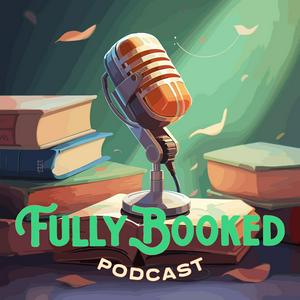
Uzyskaj bezpłatną aplikację radio.pl
- Stacje i podcasty do zakładek
- Strumieniuj przez Wi-Fi lub Bluetooth
- Obsługuje Carplay & Android Auto
- Jeszcze więcej funkcjonalności
Uzyskaj bezpłatną aplikację radio.pl
- Stacje i podcasty do zakładek
- Strumieniuj przez Wi-Fi lub Bluetooth
- Obsługuje Carplay & Android Auto
- Jeszcze więcej funkcjonalności


Fully-Booked: Literary Podcast
pobierz aplikację,
zacznij słuchać.
